Silozwane Cave - rock art paintings
From Maleme Dam National Park office at 20° 33´ 2.58°S 28° 30´ 28.97°E: travel 2.35 km to Pomongwe Cave turn-off, 3.16 km to Rhodes View turn-off. Turn right at 5.26 km onto the Silozwane Road turn-off. Follow this road going south to south east.
9.43 km leave the Matobo National Park boundary and enter the Kumalo Communal Lands.
11.97 km reach the Silozwane business centre and take the right-hand fork in the road.
12.74 km reach Silozwane Primary School.
16.13 km take the right-hand fork going south
17.18 km enter the wooded area at the foot of Silozwane Hill.
17.51 km reach the parking area.
Follow the path that leads rthrough a forested area and then up Silozwane Hill, way-marked with green arrows for approximately 400 metres to reach Solozwane Cave. GPS location is 20° 37´ 40.81°S 28° 34´ 32.27°E
Why Visit?
This great cave was explored in 1908 by F.P. Mennell and E.C. Chubb who took three days to reach the site from Bulawayo by bicycle. The cave is approached by a winding pathway up a steep ascent and follows way-marked green arrows. The cave mouth itself is 17.4 metres across and 9.2 metres high, reaching 13.7 metres deep. The paintings are extremely well-preserved and in outstanding condition - a great tribute to the people of the Kumalo Communal lands who have ensured they remain in such an excellent state of preservation. There are wonderful views from Silozwane Cave into the Matobo Hills and the gomo's that stretch north like rolling waves in a granite sea.
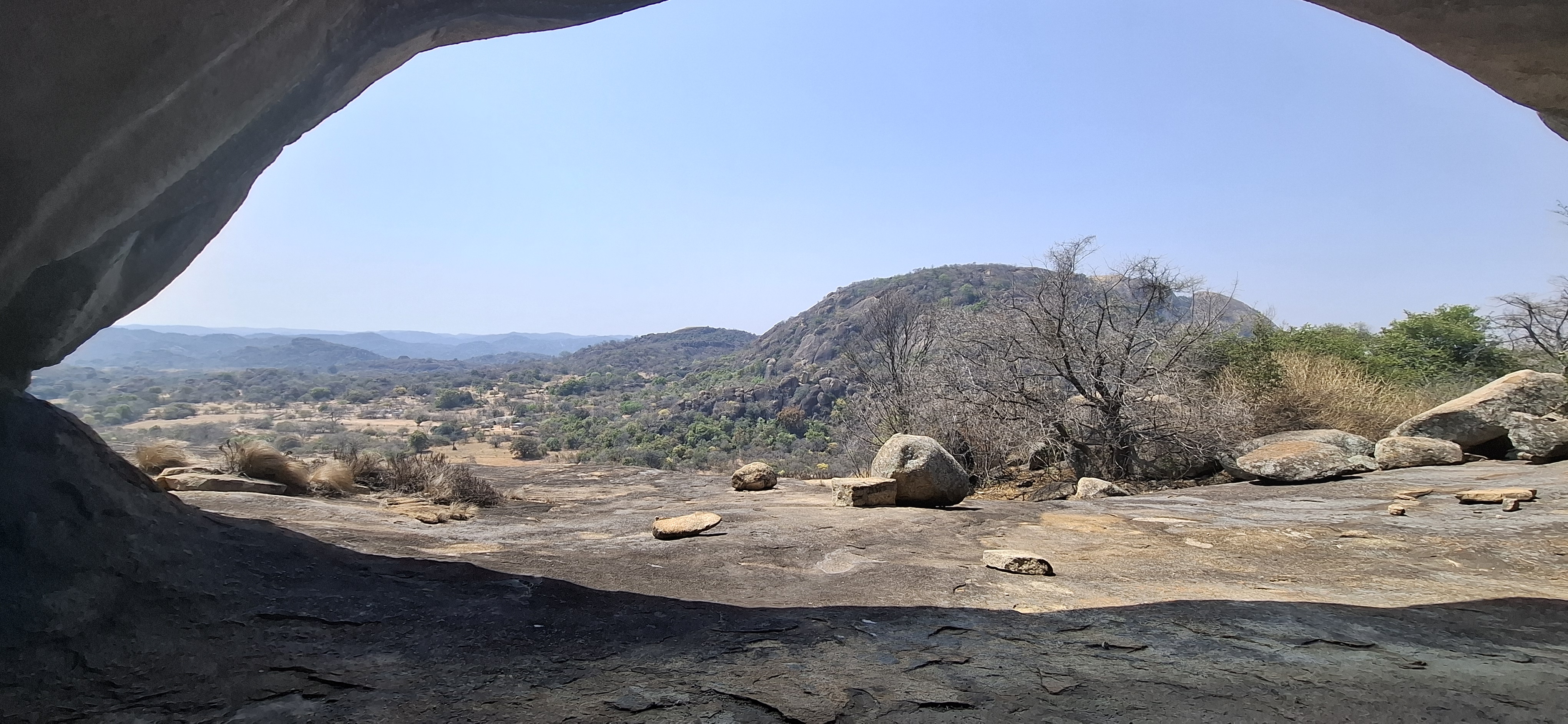
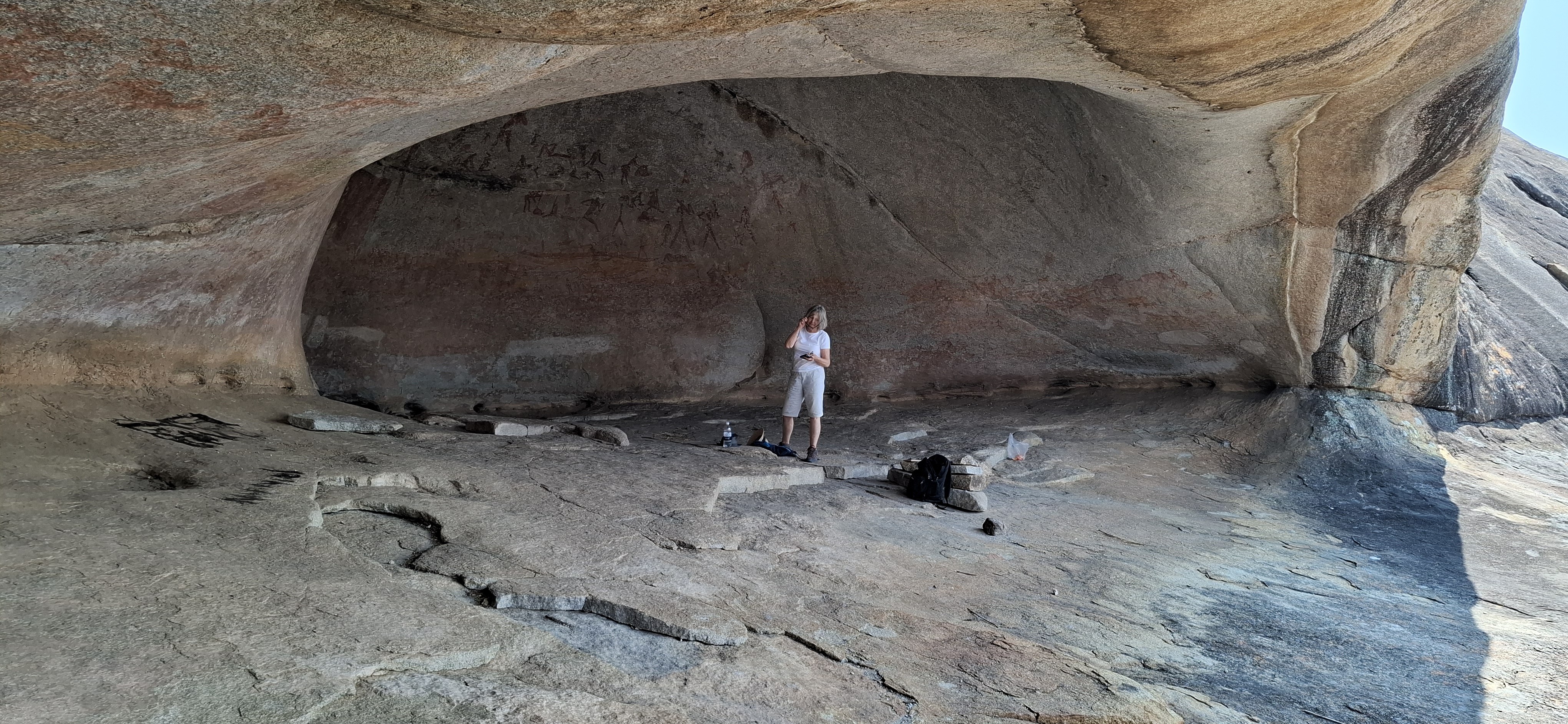
Silozwane is considered a sacred site by local people. Offerings are often made to the ancestors of the Makalanga people who have lived amongst the Matobo Hills even before the arrival of the amaNdebele people in the 1840's under their Chief Mzilikazi. Even in present-day though large snakes such as the Southern African Rock Python (Python natalensis) are feared by local people, they are still treated with great respect and they will make offerings of milk to them. I recent times the descendants od the Makalanga would make offerings to their ancestors at the full moom. A procession of local people would climb the hill to leave wire and grass bracelets, beads and beer offerings in clay pots..
The great frieze at Silozwane features mostly red ochre paintings in various shades, with some figures in yellow. Peter Garlake writes that the Silozwane Cave illustrates the full range of Matobo subjects and the central underlying theme behind San art. Many types of wildlife are depicted including lion, rhinocerous, kudu, tsessebee impala, giraffe, fish, a flock of guinea fowl, another of storks or cranes, and a winged termite, 10 cms long, as well as hunter figures with bows and arrows. Unusually there are some scenes of San domestic life including a woman preparing food and a man lying down with his head resting on his arms. Garlake considered the domestic scenes the most striking paintings of the site, even though they do not form a single coherent composition, but a series of images stretching across the froeze.

A great snake, 2,2 metres long has an undulating back upon which are large yellow antelope, some standing, others grazing and running and a red figure of a man. The snake has a giraffe-shaped head with horns.
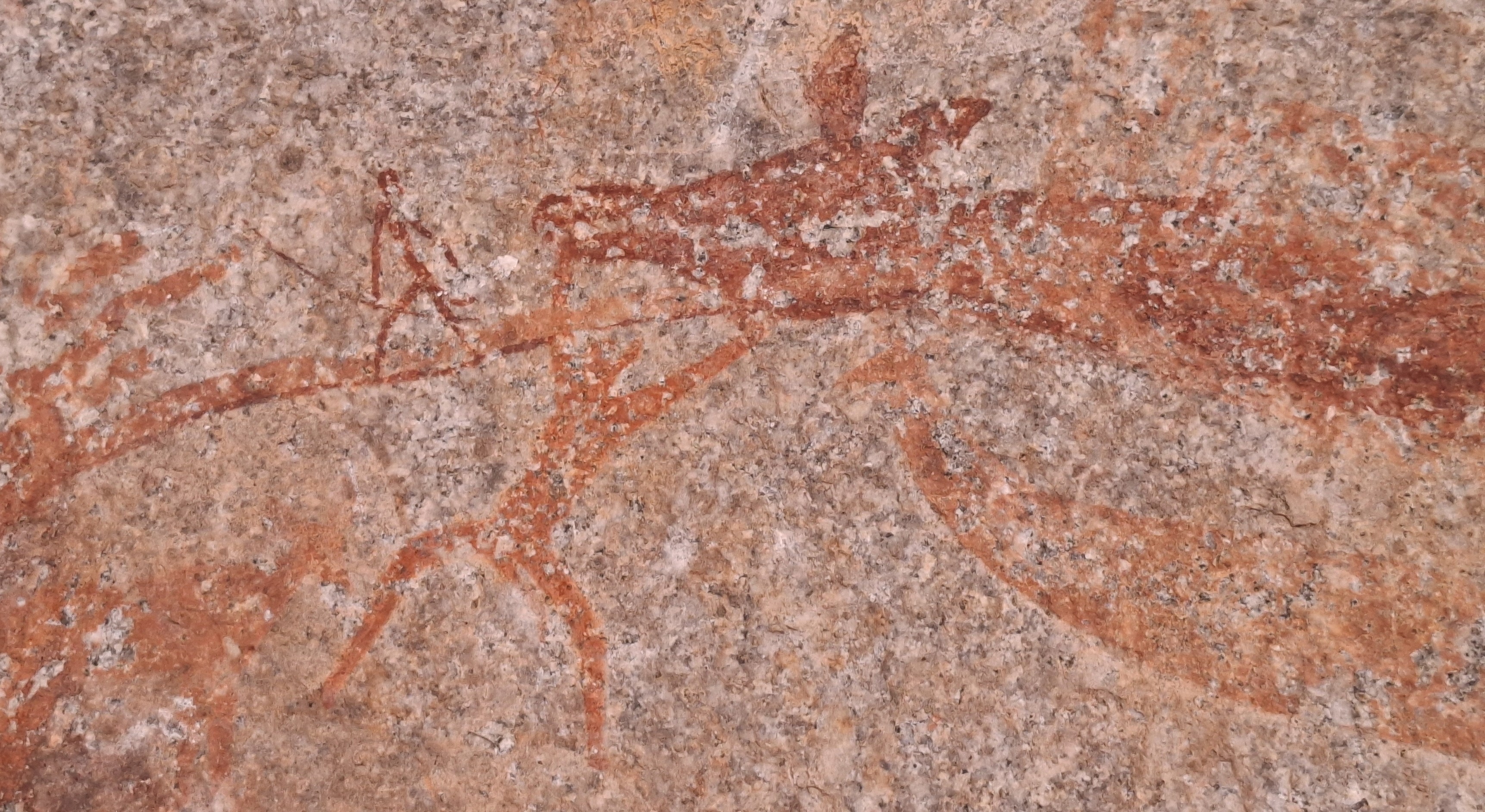
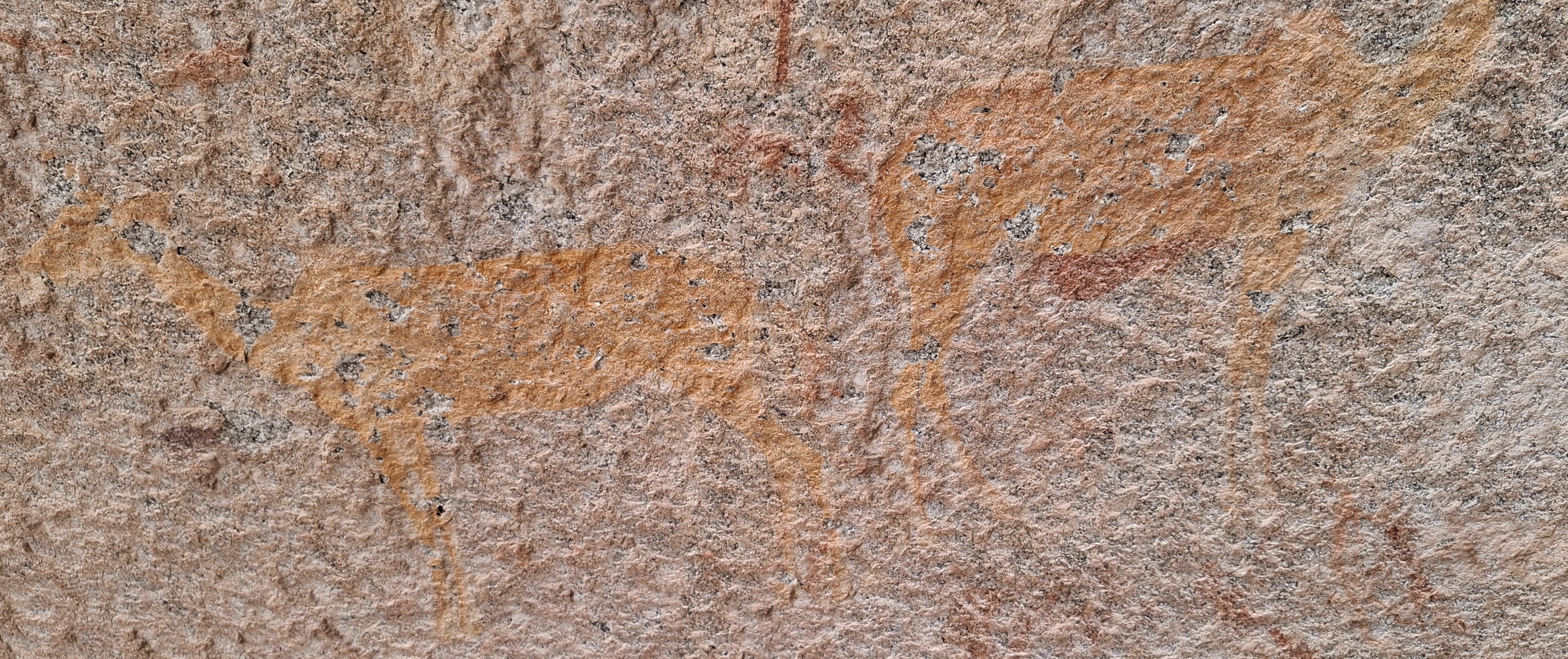
The paintings
Although there are many similarities between the rock art of Mashonaland and Matabeleland - the friezes were painted by artists from the same San society with the same belief system and same artistic tradition, there are differences in the style and subject matter covered in the two regions.
For much of the description of this great cave I have used Peter Garlake's classic The Painted caves; an Introduction to the Prehistoric art of Zimbabwe.
High on the left of the cave are are four large walking figures of two tall hunters and two smaller figures that have large bundles that appear to have been superimposed at a later date.
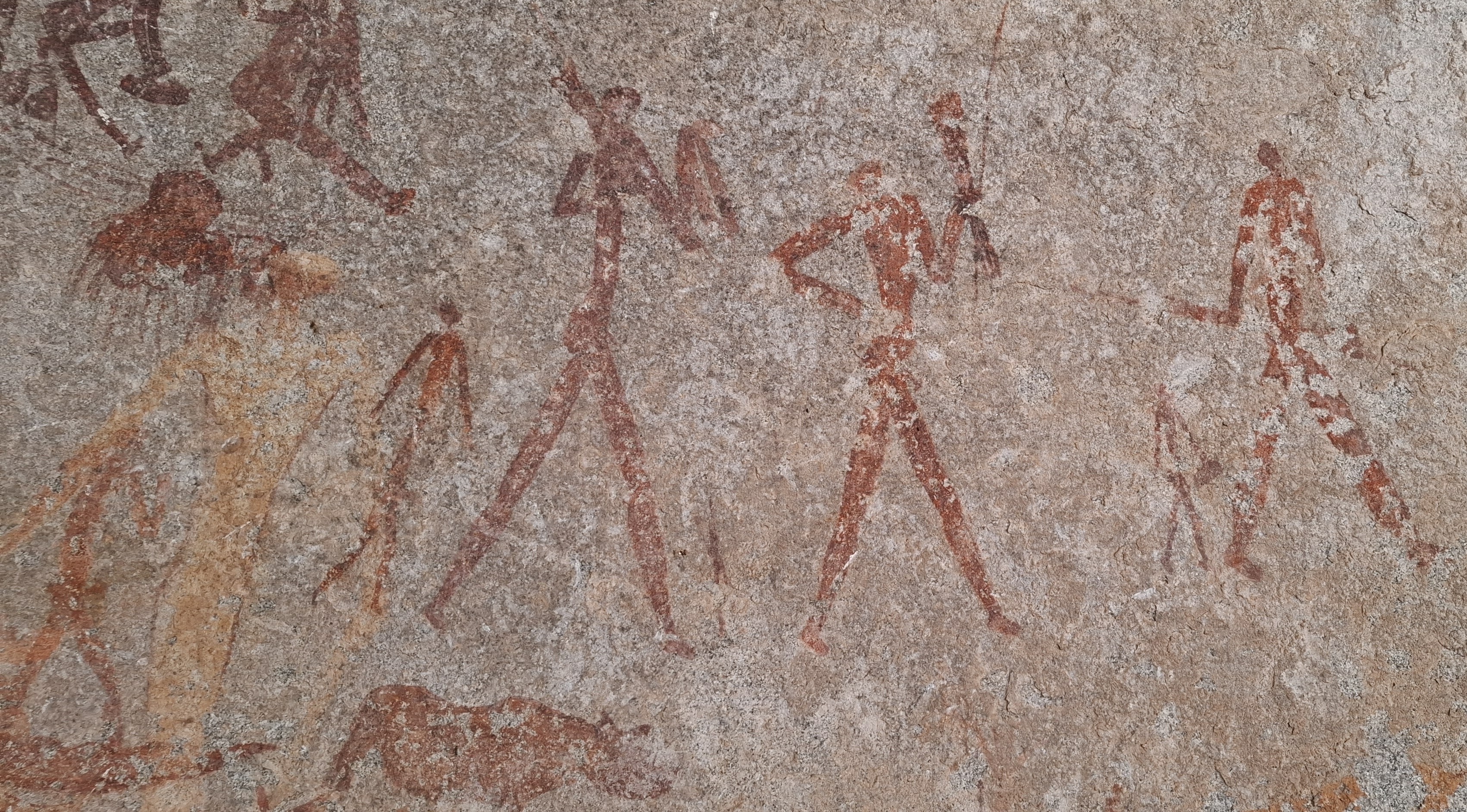
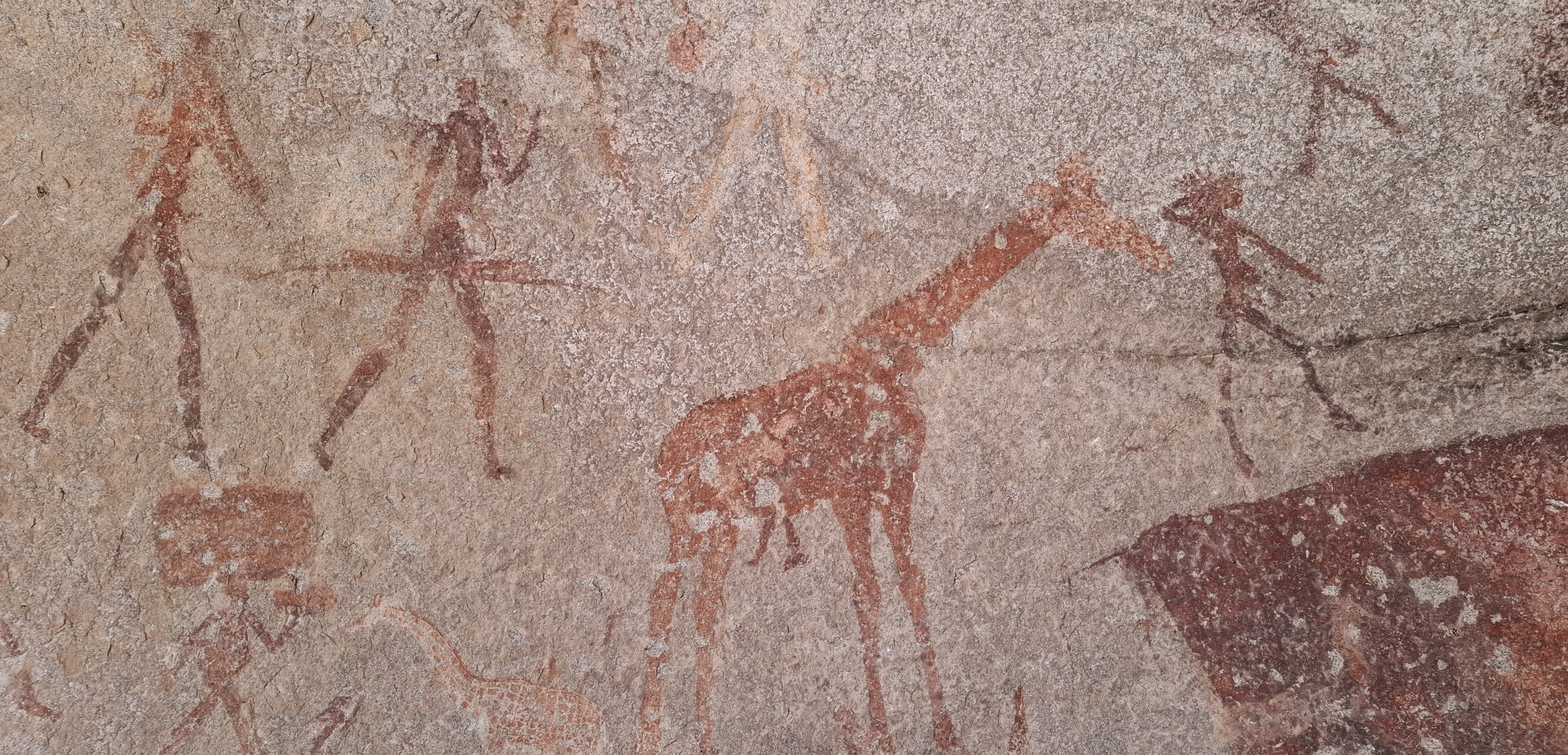
Close by is a small polychrome giraffe finely painted and then a large dark monochrome giraffe next to a large rectangular shape that has a polychrome kudu cow superimposed upon it.
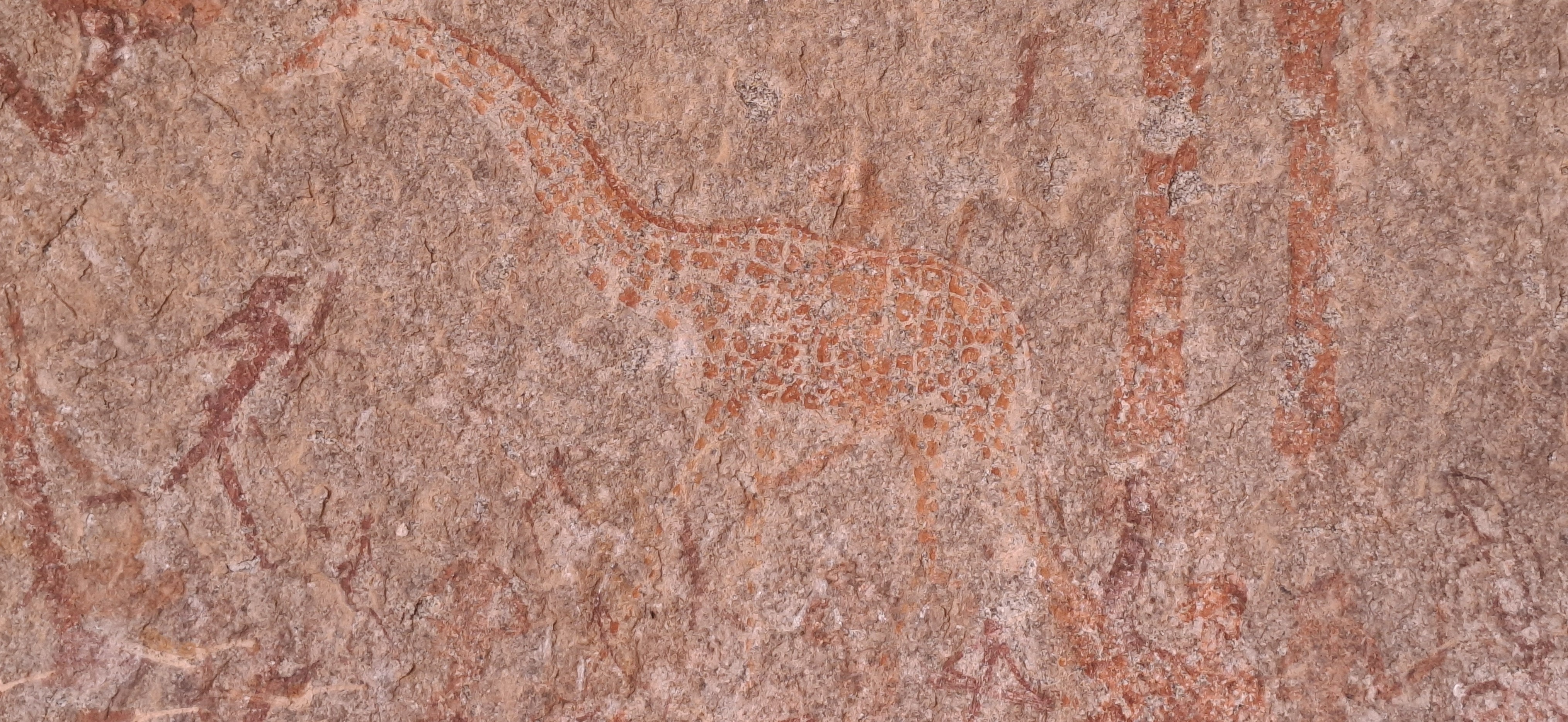
Above the shape two humans walk towards three large figures; one a woman with both hands clasping her head, another with lines emanating from the stomach and the third seated with his weapons beside him. Below are two stippled circles and two semi-circles that probably represent shelters made of grass knotted at the top. A woman sits with one, her bag beside and a child at the entrance; above a large figure ls lying down, hand to his head. To his right, a large seated figure has arrows and below is a large seated figure with arrows.
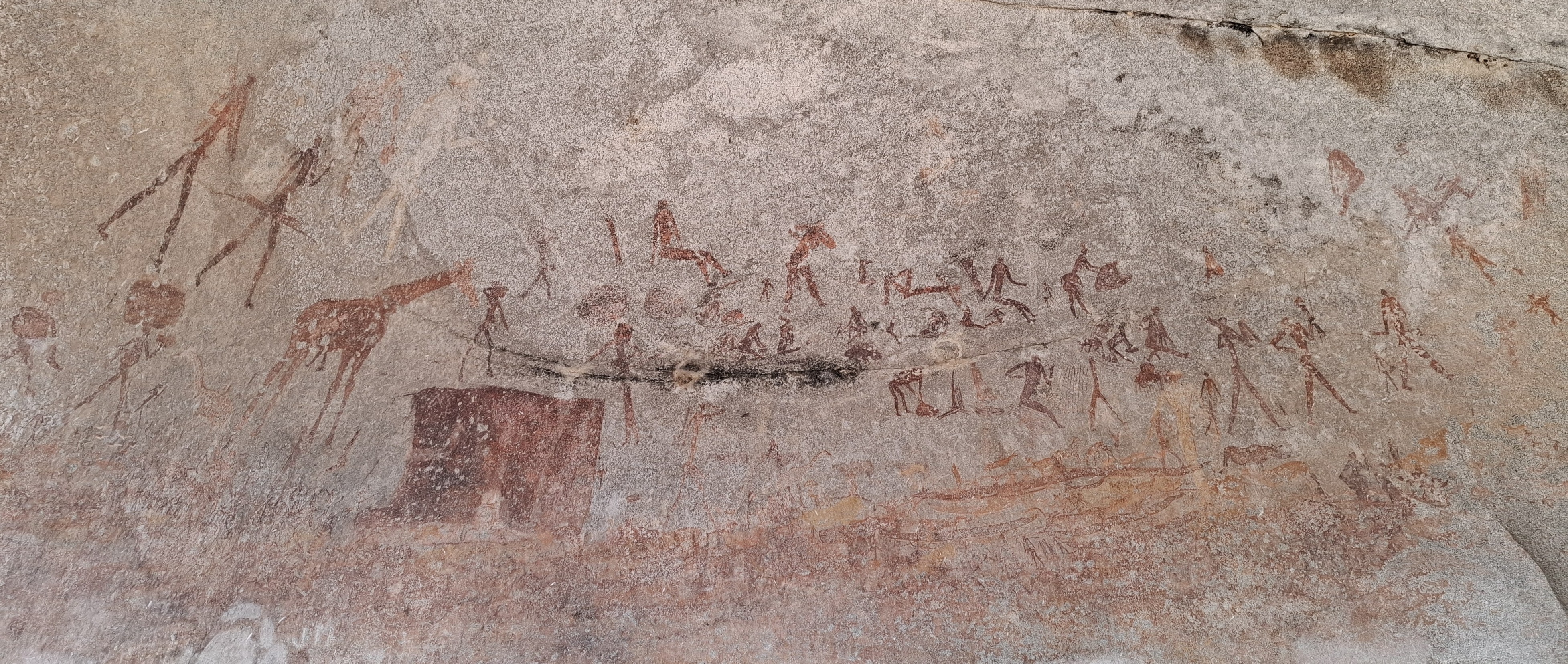
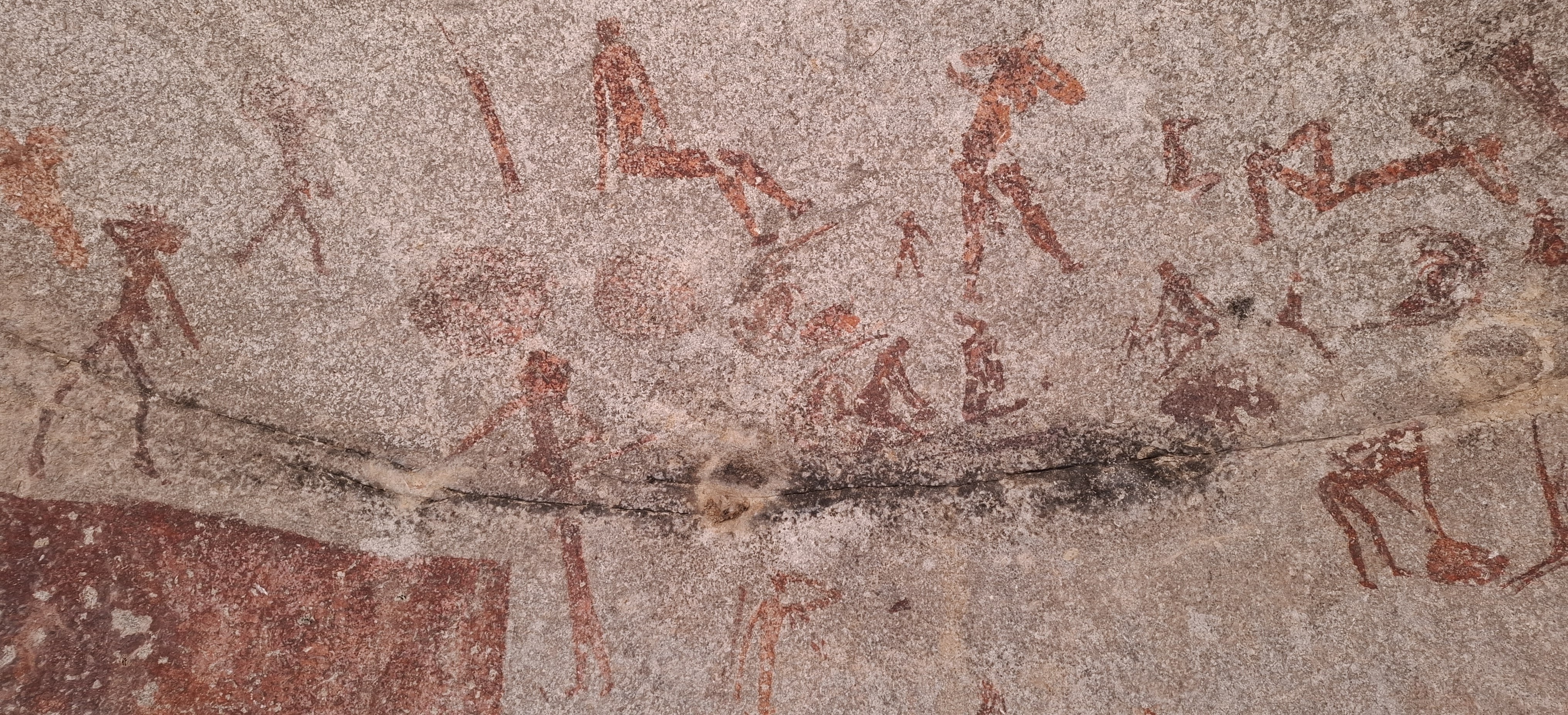
Below a figure bends over a bag, with weapons against it. A small human kneels beside with a pattern of concentic circles below. On both sides are small seated figures. To the right are two tiny humans and a woman reaches out to the back of a squatting figure to her front. below a woman grinds food within her enclosure, gourds lie beside her and a figure inn a cape squats at the entrance with several tasellled bags below,
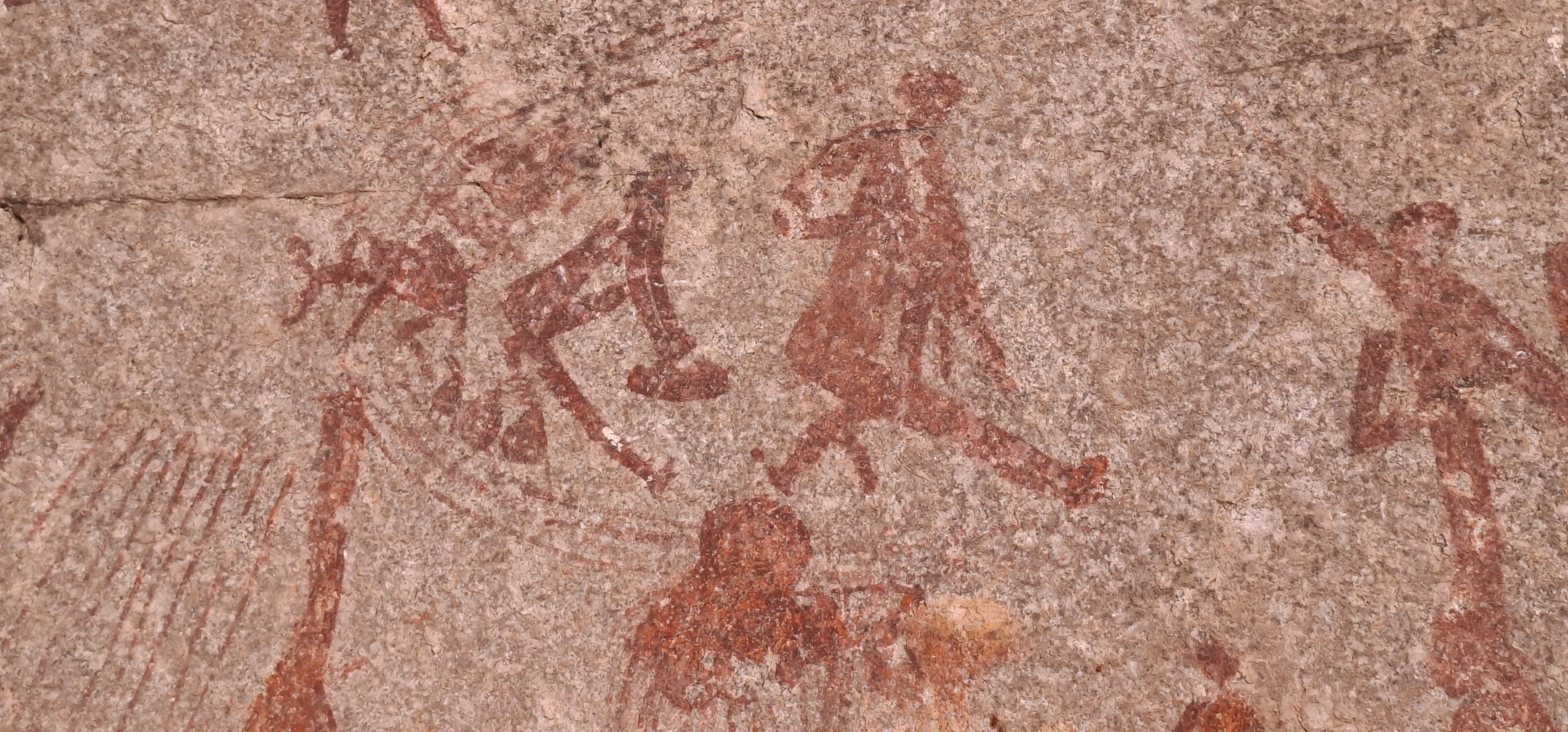
Large hunters walk away from the camp-site scene to the right matching those approaching the camp from the left. Further right are some smaller seated and reclining figures.
At the extreme top left of this scene are two very large shadowy figures. To the right of the camp-site an orange figure of a human has a dark outline. Another on the right of the large rectangular shape described above is holding his head; lines come from his arm and penis.
The lower paintings have five large snakes with animal heads and thin tails at their centre. A small figure with large ears hangs from the top snake's head. Above are some shaded fish and a beautifully drawn small antelope with the only flying termite next to its hind legs. Other small antelope, some lying down, others grazing, are above the snake's back. Superimposed on the snake's back ate two small pale figures with ears resembling those of kudu and their arms raised and at the snake's tail, a small hippo. another beautifully depicted antelope. and a woman with bag and digging stick. Under the snake are a wildebeeste, some polychrome antelope, a lizard and a flock of birds.
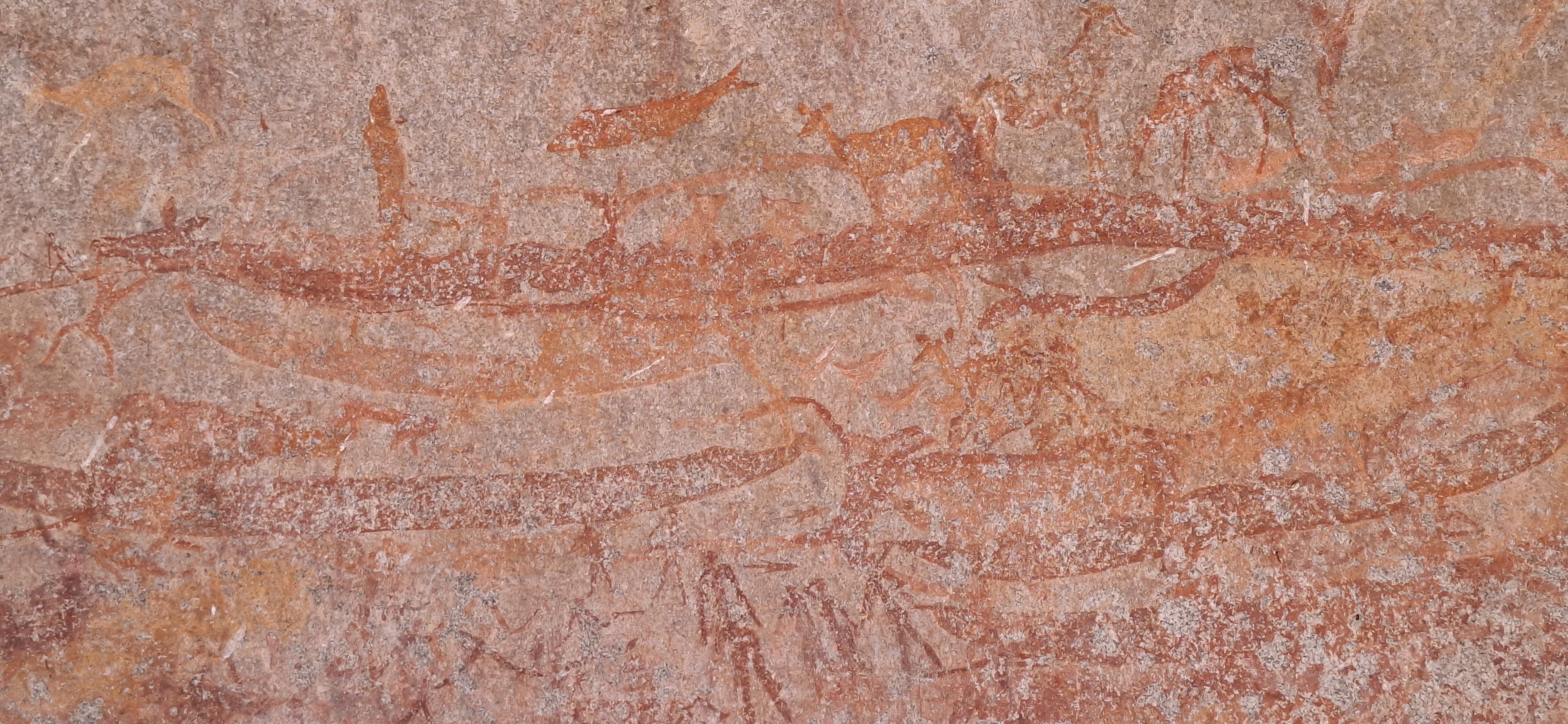
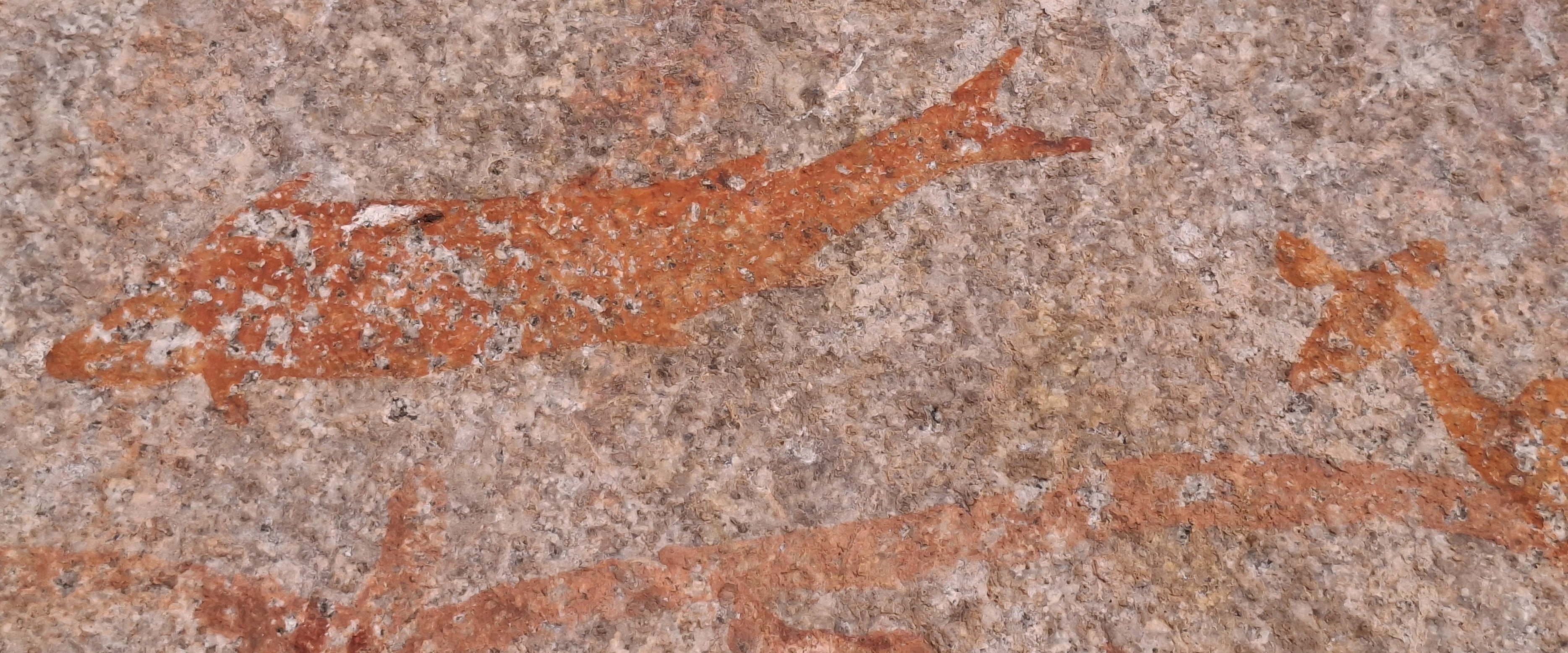
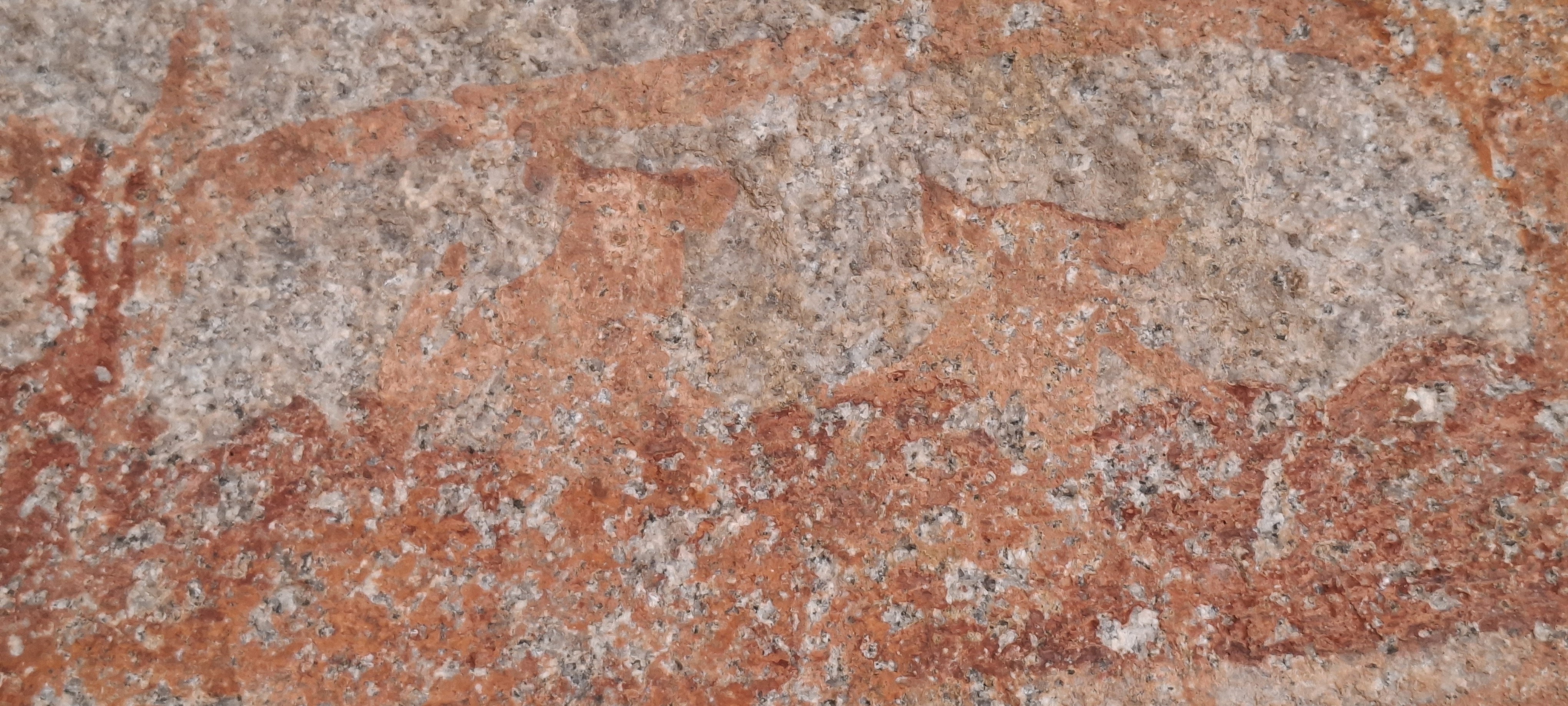
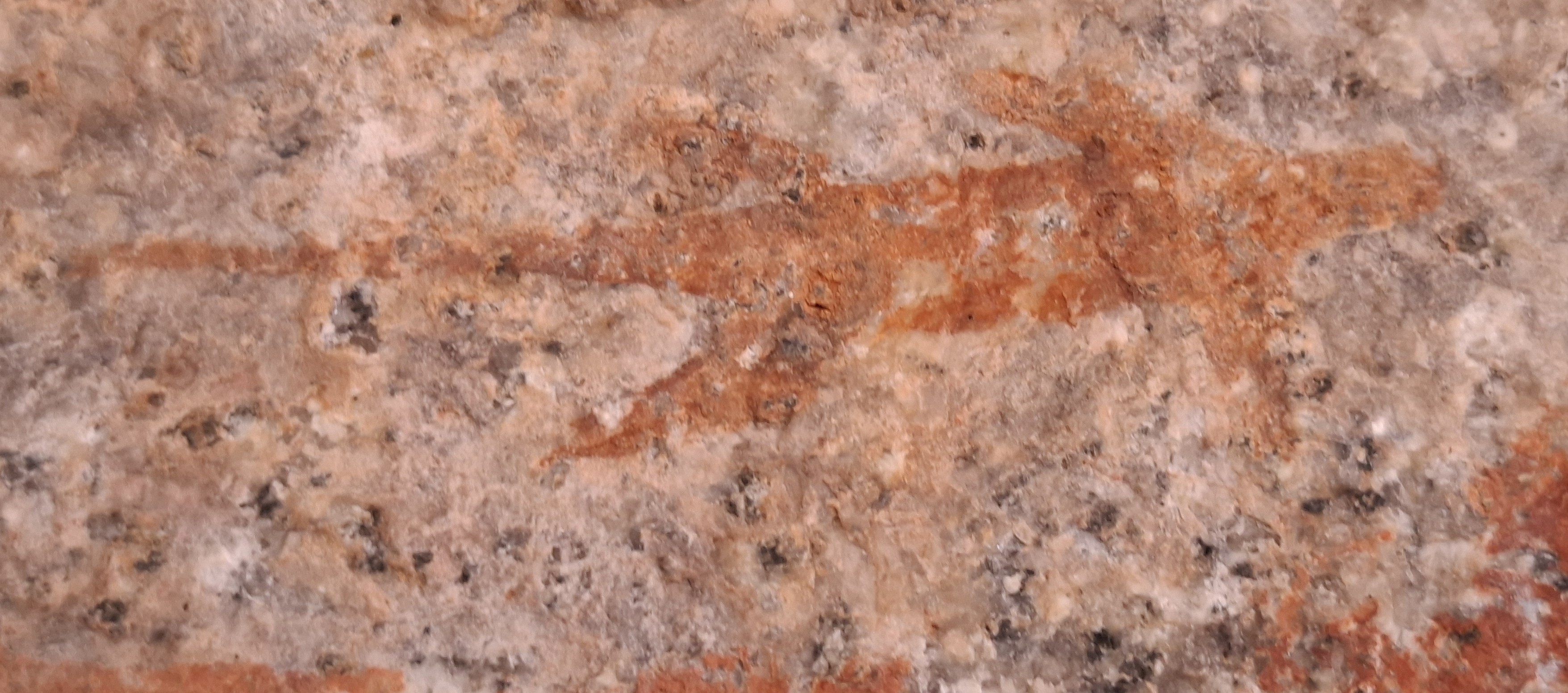
To the left of the snakes are some large kudu, a well-executed giraffe, a antelope lying down and a woman, hands to head with a curved back.
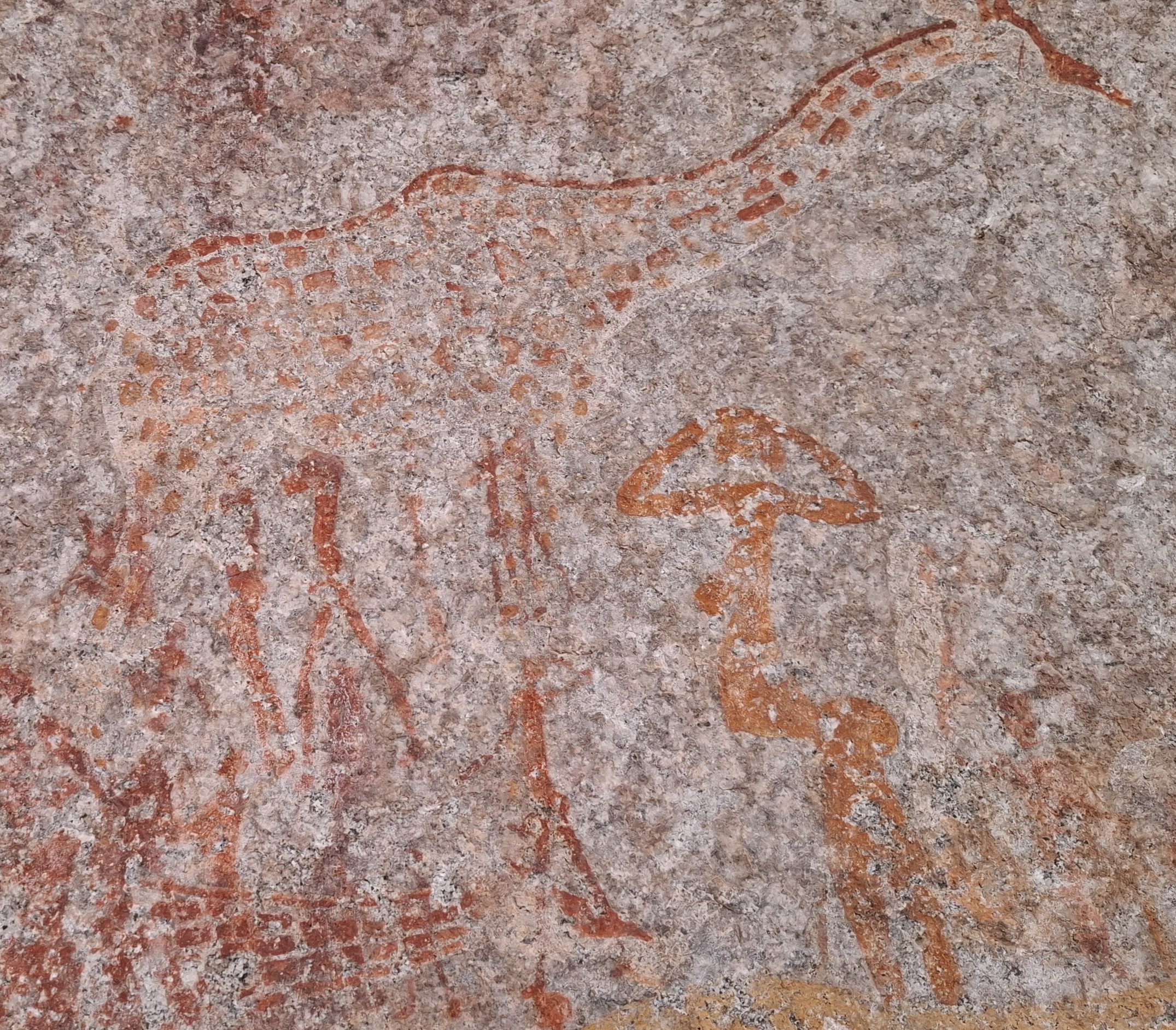
On the extreme right of the cave are two large felines, antelope including tsessebe and two sitting humans, joined by a line, one with a cylindrical object in its mouth.
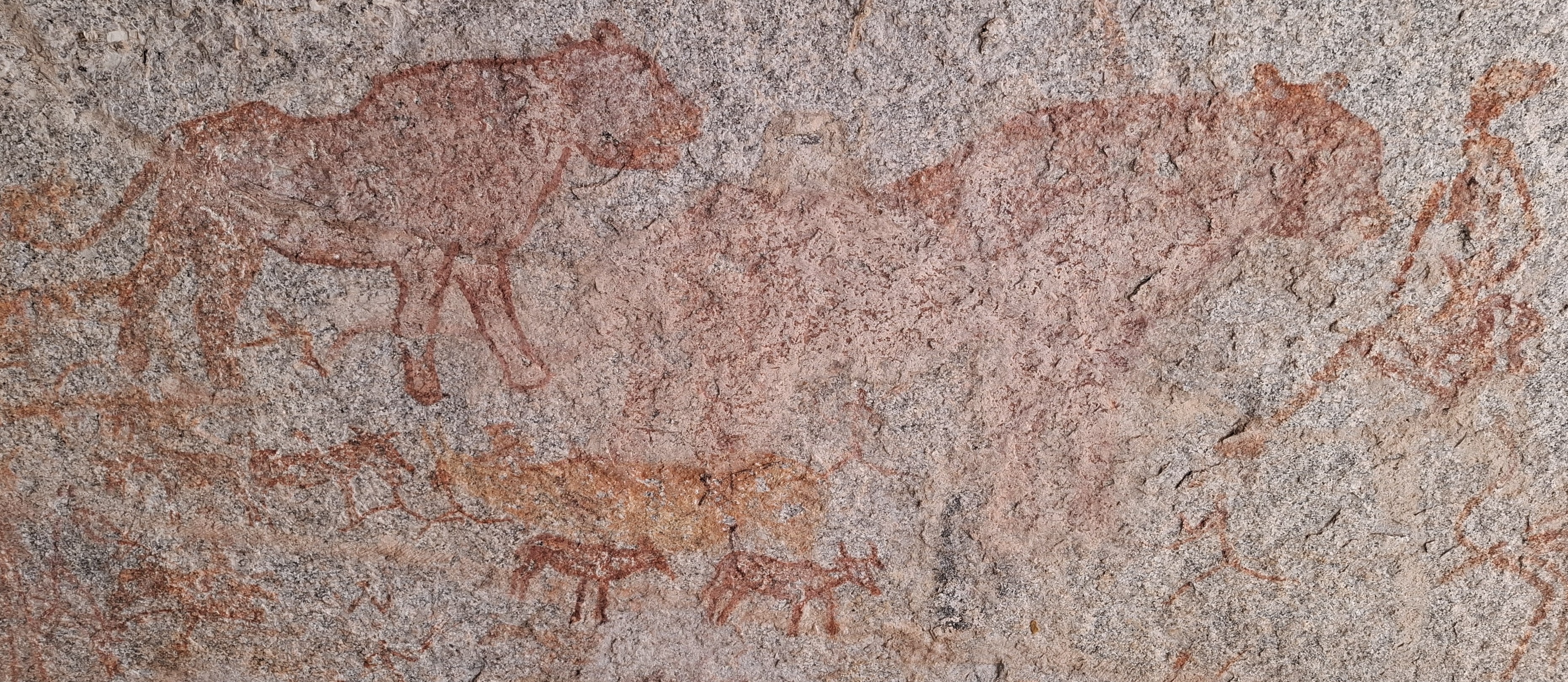
On the cave roof above the entrance is a single large hunter in profile with what Garlake describes as a tulip penis.
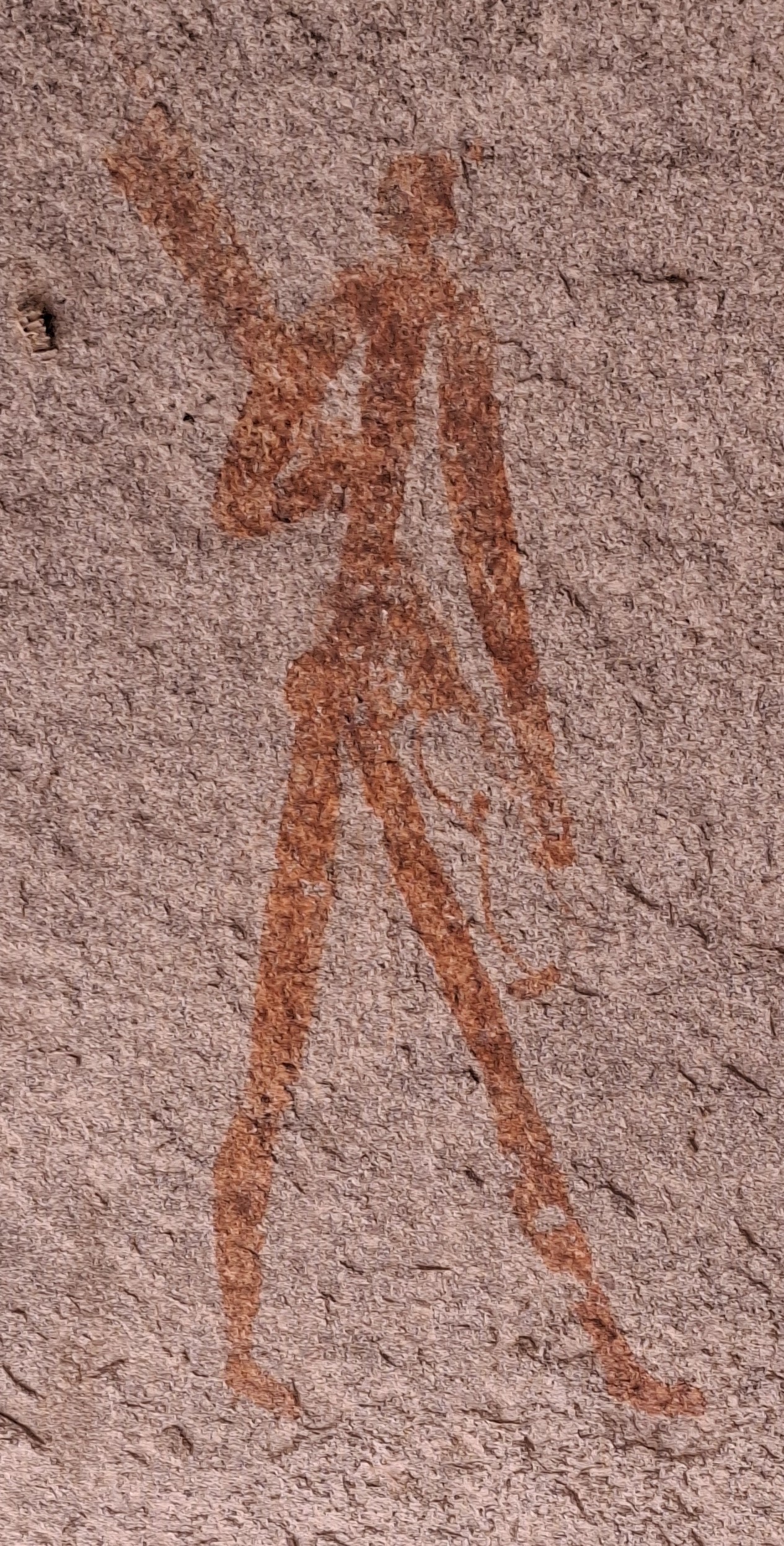
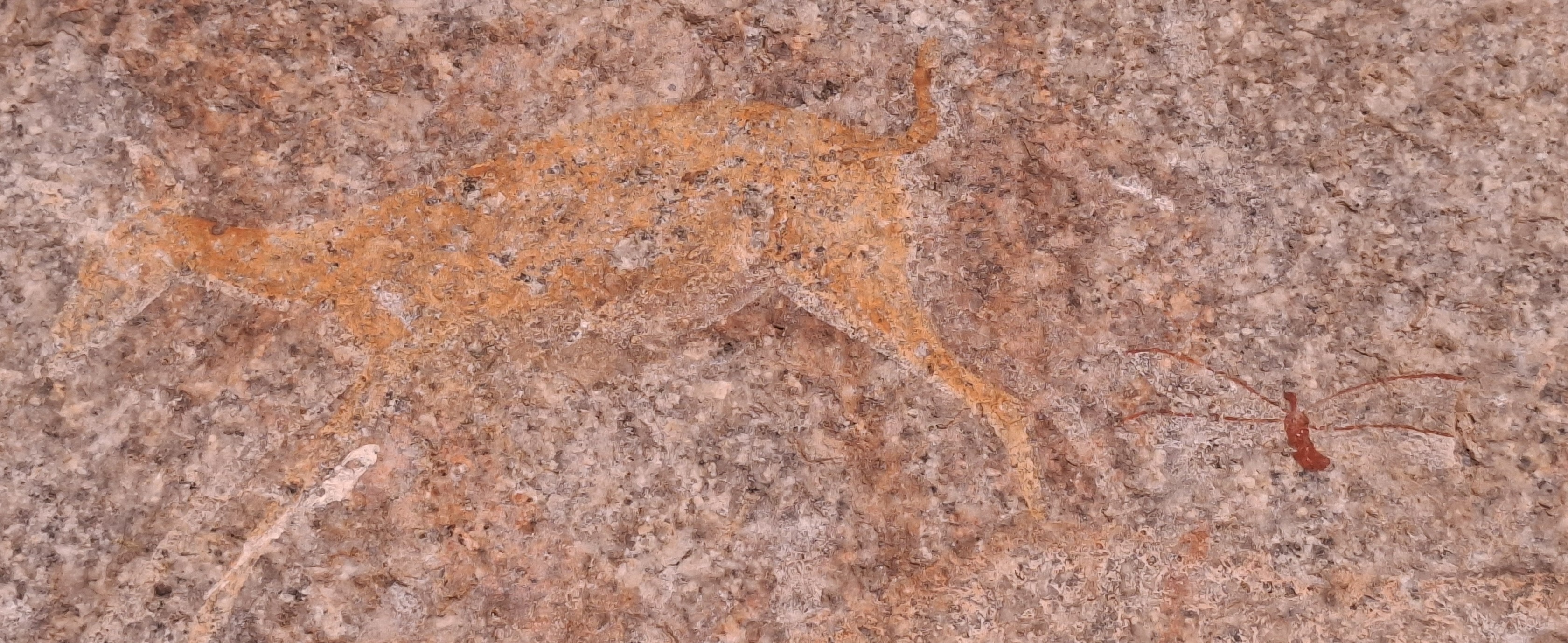
On the left another tall standing hunter with the faint traces of three very large hunched figures beside him. Left of these figures is the remains of the only large ovoid shape at Silozwane cave with white caps. Close-by are the faint remains of an elephant, some large orange kudu and giraffe. Lower down amongst an amorphous mass of paintings can be seen a lone of ochre figures, several of which aim large arrows with cresent shaped heads. One points his fingers next to a shelter with a woman with two sticks standing at the entrance. Above are the outlines of polychrome birds; probably storks or cranes.
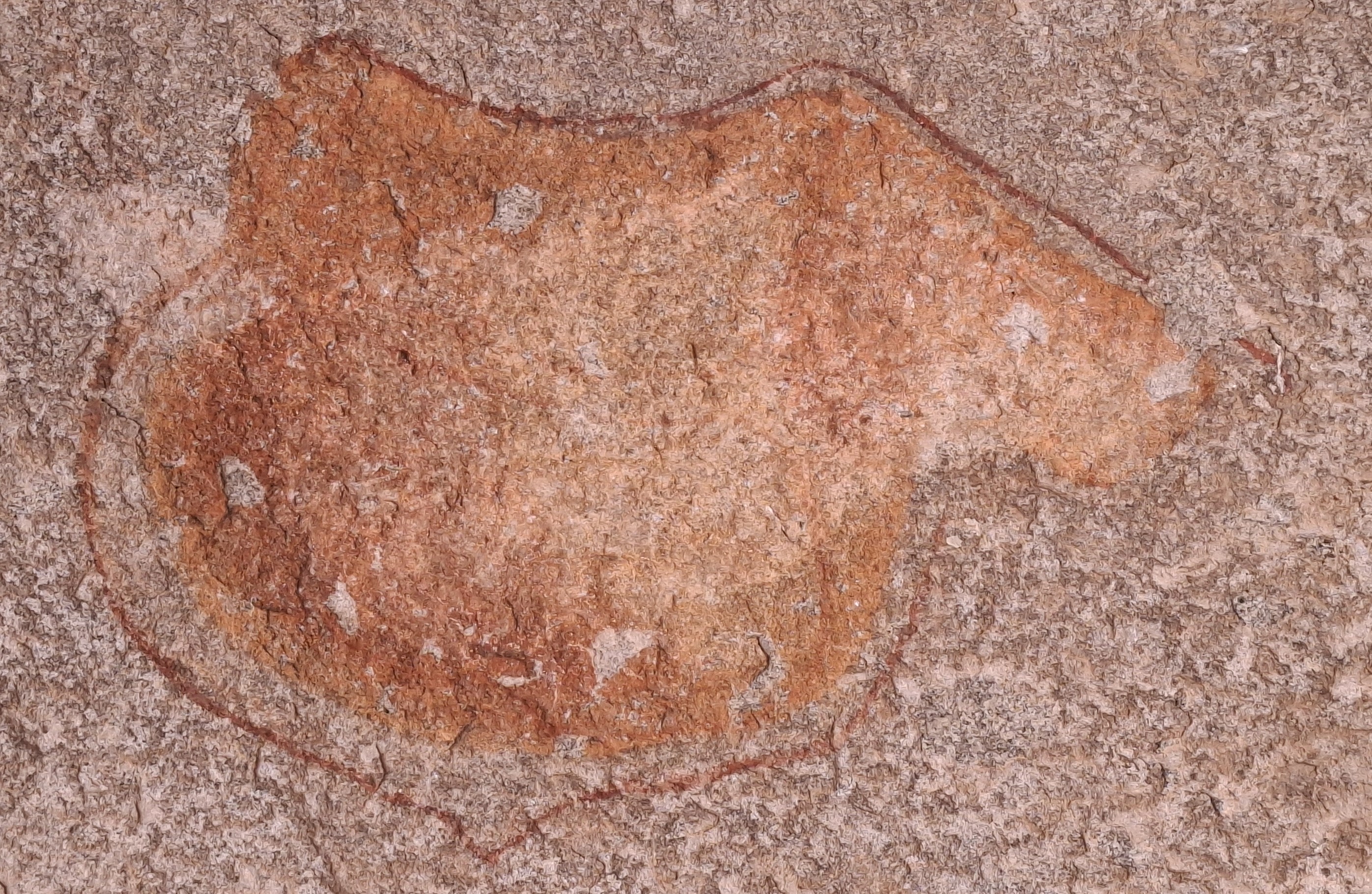
On the left outside the cave are several antelope and several humans; one with hands clasped above its head.
References
C.K. Cooke. A Guide to the Rock Art of Rhodesia. National Museums and Monuments of Rhodesia 1974.
E. Goodall, C.K. Cooke, J. Desmond Clark. Editor R. Summers. Prehistoric Rock Art of the Federation of Rhodesia and Nyasaland. National Publications Trust. 1959
P. Garlake. The Painted Caves: An Introduction to the Prehistoric Art of Zimbabwe. Modus Publications (Pvt) Ltd, Harare 1987
R.J. Fothergill. The Monuments of Southern Rhodesia. The Commission for the Preservation of Natural and Historical Monuments and Relics, 1953
